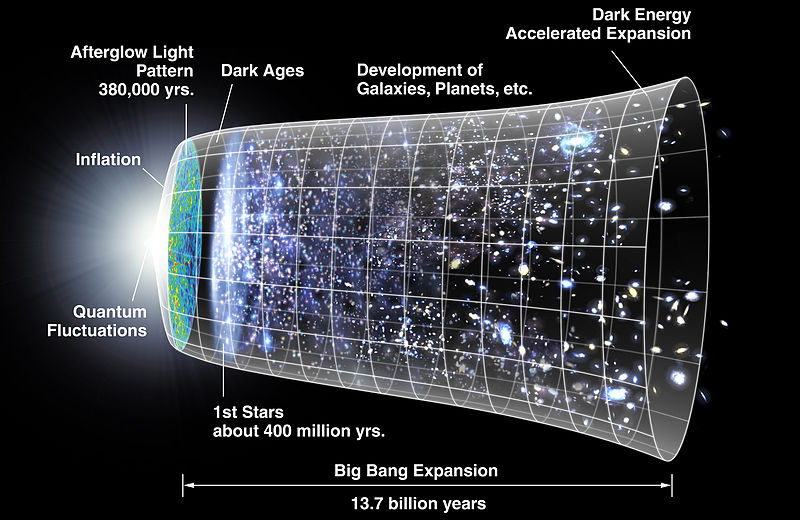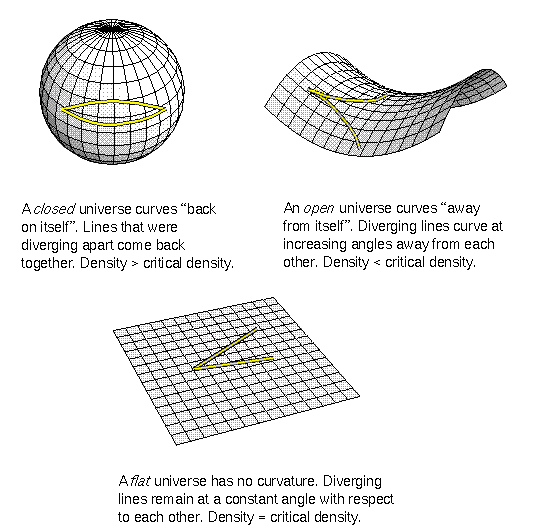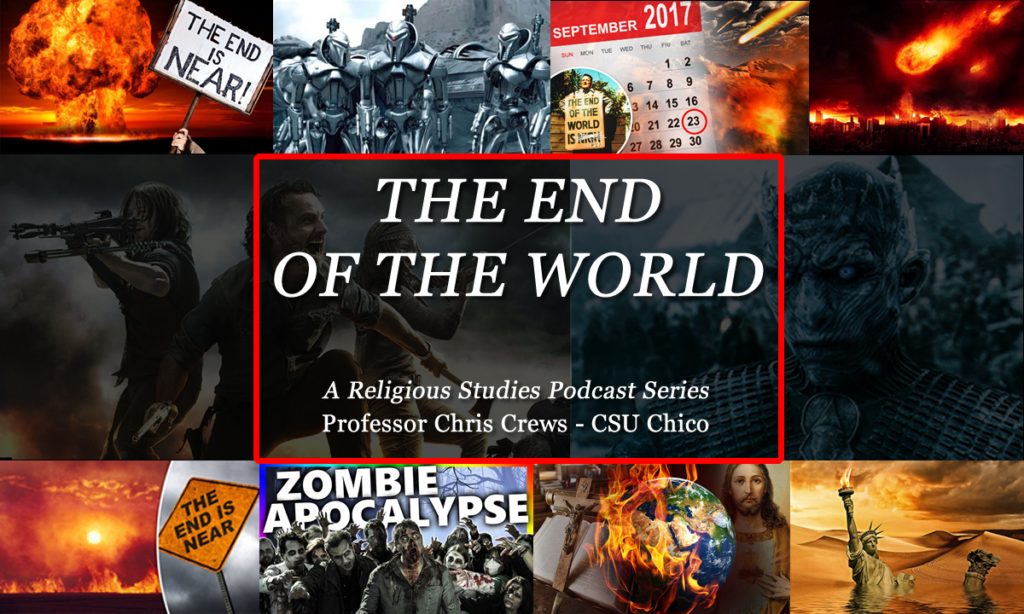This Week in Our Universe: Does the Universe Have an Edge?
Well boys and girls, we’re finally to the final part III post for This Week in Our Universe, where I wanted to think about our universe and the question of whether or not there is an edge? If you missed the first two posts on “biblical rainfall amounts” (pt. I) and Voyager I leaving our solar system (pt. II), you can find them here (pt. I and pt. II). But first, I have to show off my new brass orrery, or solar system model, because I think it is really cool! So here it is below in all its glory.
Ok, so we’re talking about the universe. Before I jump into all this space talk, perhaps a little background to this post is in order. I’m currently working on a conference paper for the American Academy of Religion annual conference in a couple months. There I’ll be presenting a paper on astrobiology and creationist beliefs about the universe, including a case study of a public media campaign in 2009 that sent thousands of messages to the exoplanet Gliese 581d.
Cosmological Theories
So I’ve been doing a lot of reading and research (and thinking in general) about astronomy and the cosmos. In the course of my various research, especially in relation to questions of “origins,” as the beginning of the universe is often called in religious circles, this question has come up a few times. So for those a little rusty in their space science knowledge, there were two major theories proposed for the universe within a naturalistic framework, one was the “Steady State” theory, originally proposed by Sir James Jeans, and the other was the “Big Bang” theory, proposed first (without that title) by Belgian priest and astronomer Georges Lemaître. The term “big bang” actually came from British astrophysicist Sir Fred Hoyle, who was more a fan of the steady state theory, but that’s a different story.
As you probably know, the Big Bang theory, with continuing modifications and additions, ultimately won out, thanks in part to two important discoveries. The first discovery came between 1924 and 1929, when Edwin Hubble was able to confirm that the universe was expanding (using redshifts and other indicators like recession and distance velocity), which ultimately led to the creation of Hubble’s Law. The second discovery came in 1964 with something called cosmic microwave background radiation, or CMBR. This is basically microwave temperature signatures thought to be left over from the original expansion and inflation of spacetime following the Big Bang. That is the dominant theory in astronomy today about our cosmic origins. Below are two model depicting what this Big Bang process might have looked like.
Now there are lots of debates about the Big Bang versus a Christian God (and some other “Gods/gods”) creating the universe. The primary source of explanation from a creationist perspective is the Bible, and specifically the Book of Genesis (1:1-31), which lays out the basic creation by God of the universe as Christians understand it:
In the beginning God created the heaven and the earth1 …And God said, Let there be lights in the firmament of the heaven to divide the day from the night; and let them be for signs, and for seasons, and for days, and years: 15 and let them be for lights in the firmament of the heaven to give light upon the earth: and it was so. 16 And God made two great lights; the greater light to rule the day, and the lesser light to rule the night: he made the stars also. 17 And God set them in the firmament of the heaven to give light upon the earth, 18 and to rule over the day and over the night, and to divide the light from the darkness…
Depending on whether a Christian prescribes to a conservative literal interpretation, as most Biblical creationists do, or a more liberal interpretation, which the majority of Christian scientists do, there is a good bit of wiggle room for reconciling the scientific theories with the Bible. For those serious students of science and theology I suggest checking out Gerald Rau’s book Mapping the Origins Debate: Six Models of the Beginning of Everything, which I just finished reading last week. In it he provides a helpful classificatory scheme for teasing out key differences in views between naturalism and supernaturalism within these origin debates.
Although this question is immensely fascinating, it is not the main focus of this post, so for some of these science-religion debates check out this link, this link, and specifically concerning the Big Bang here. The answer we choose has wider implications than you might at first think (here’s one example of how this impacts us all), since at root this is really a debate between two opposing worldviews, those of naturalism and supernaturalism. [In reality, this is a much bigger debate than just two worldviews, but that is another discussion that will have to wait for a different post. Suffice to say here that the question of interest to us–does the universe have an edge–will likely have a different answer depending on which of these ontological positions–naturalism or supernaturalism–you tend to find more personally compelling.]
So does the universe have an edge? Well, if it did, how would we know, and where should we look to find it? To answer that we need to first ask, just how big is our universe? Supposedly our universe has over 100 billion galaxies and so many stars that I can’t even comprehend the number used (10 sextillion ??). The European Space Agency says “something like 1022 to 1024 stars in the Universe.” And that doesn’t even get into the question of multiverses, which would require yet another entire post.
Fortunately for us PBS/NOVA has a great special dedicated to exactly how big the universe is here, and NASA has a great introductory page on the same question here. The answer is basically, we have no idea, since we can only see so far into space (or backwards into time). This little bit from the PBS page helps make this point:
There is an edge to what we are able to see and could ever possibly see in the universe. Light travels at 300,000 kilometers per second (186,000 miles per second). That’s top speed in this universe—nothing can go faster—but it’s relatively slow compared to the distances to be traveled. The nearest big galaxy to our Milky Way, the Andromeda galaxy, is two million light-years away. The most distant galaxies we can now see are 10 or 12 billion light-years away. We could never see a galaxy that is farther away in light travel time than the universe is old—an estimated 14 billion or so years. Thus, we are surrounded by a “horizon” that we cannot look beyond—a horizon set by the distance that light can travel over the age of the universe. This horizon describes the visible universe—a region some 28 billion light years in diameter.
If it still seems overwhelming try this cool little guide designed by the folks at Harvard’s Center for Astrophysics: “How big is our universe?” I spent a lot of time trying to find a helpful image to go with this question, but truth be told, there is just no way to even begin to capture how vast the known universe might be. But hey, we can’t let that stop us, right! So here is one take on our known universe, with the complexity and scale getting bigger and wider from top left to bottom right:
Now don’t let these models fool you into thinking that there is some clear “edge” where the stars and cosmic debris all stops–that’s just an artifact of needing an end point for a graphic.
Infinite vs Finite Universe
Depending on which theory of the universe you prescribe to, the edge may in fact be infinite, in which case the above images would basically go on for infinity. I won’t pretend to understand all of the science behind this, but NASA has a useful brief explanation about some of these processes which is worth quoting here:
The fate of the universe is determined by a struggle between the momentum of expansion and the pull of gravity. The rate of expansion is expressed by the Hubble Constant, Ho, while the strength of gravity depends on the density and pressure of the matter in the universe. If the pressure of the matter is low, as is the case with most forms of matter we know of, then the fate of the universe is governed by the density. If the density of the universe is less than the “critical density” which is proportional to the square of the Hubble constant, then the universe will expand forever. If the density of the universe is greater than the “critical density”, then gravity will eventually win and the universe will collapse back on itself, the so called “Big Crunch”. However, the results of the WMAP mission and observations of distant supernova have suggested that the expansion of the universe is actually accelerating which implies the existence of a form of matter with a strong negative pressure, such as the cosmological constant. This strange form of matter is also sometimes referred to as “dark energy”. If dark energy in fact plays a significant role in the evolution of the universe, then in all likelihood the universe will continue to expand forever.
So depending on how much energy is left in an inflating universe versus how strong gravity pulls back, the answer as to an edge of the universe varies. In an infinitely expanding universe there will be a leading edge, but it will never truly be fixed. But what if the universe is not expanding, but instead is bounded or finite? Or more interestingly, what if the shape of spacetime itself is flat or round? That also seems to matter a lot, as you can see from the following illustration of various universe configurations.
This brings us back to the religious domain, since most Christian cosmological models assume a finite universe created by God. Depending on whether someone is an Old Earth or Young Earth Creationist on one hand, or a more general theist on the other (ie: God made the universe, but agnostic about the time or mechanisms involved), you will get different answers to this question.
One example, from the YEC perspective, is provided on the connection between the age of creation and the speed of light as it is being re-theorized by creationist Russell Humphreys:
Dr. Humphreys’ new creationist cosmology literally “falls out” of the equations of GR [General Relativity], so long as one assumes that the universe has a boundary. In other words, that it has a center and an edge—that if you were to travel off into space, you would eventually come to a place beyond which there was no more matter. In this cosmology, the Earth is near the center .
This might sound like common sense, as indeed it is, but all modern secular (“big bang”) cosmologies deny this. That is, they make arbitrary assumption (without any scientific necessity) that the universe has no boundaries—no edge and no center. In this assumed universe, every galaxy would be surrounded by galaxies spread evenly in all directions (on a large enough scale), and so, therefore, all the net gravitational forces cancel out.
However, if the universe has boundaries, then there is a net gravitational effect toward the center. Clocks at the edge would be running at different rates to clocks on the Earth. In other words, it is no longer enough to say God made the universe in six days. He certainly did, but six days by which clock?
Humphrey’s theory is too technical to get into here, and require a lot of big assumptions and a 4th dimension to explain things, but the basic point here is to show that the infinite universe idea is not the only game in town. Another Christian view from the Reasonable Faith website, less literal in its assumptions, puts it this way:
That problem [of a cosmic beginning] was nicely captured by Anthony Kenny of Oxford University. He writes, “A proponent of the Big Bang theory, at least if he is an atheist, must believe that the universe came from nothing and by nothing.”4 But surely that doesn’t make sense! Out of nothing, nothing comes. So why does the universe exist instead of just nothing? Where did it come from? There must have been a cause which brought the universe into being.
We can summarize our argument thus far as follows:
1. Whatever begins to exist has a cause.
2. The universe began to exist.
3. Therefore, the universe has a cause.
Given the truth of the two premises, the conclusion necessarily follows.
From the very nature of the case, this cause must be an uncaused, changeless, timeless, and immaterial being which created the universe. It must be uncaused because we’ve seen that there cannot be an infinite regress of causes. It must be timeless and therefore changeless—at least without the universe—because it created time. Because it also created space, it must transcend space as well and therefore be immaterial, not physical.
While there are holes in this logic if we take concepts such as a multiverse, quantum tunneling and string theory as plausible, this gives us another example of a theological origins view. Unfortunately it doesn’t tell us much about the question of the edge of the universe per se. Interestingly, at least from my initial research, this seems to be an area much less discussed by Christian theorists in relation to similar fields. Whether this gap reflects an actual lack of discussion and writing or if I am simply not finding these discussion in my research is an open question.
It is clear, however, that there has been much less attention paid to astronomy from a Creationist perspective, as noted by Faulkner and DeYoung in their survey of the field of creationist astronomy, where they argue “there has not yet emerged even a rough framework of an alternative creation model as we find in biology and geology.” While this has changed somewhat since they wrote this piece (1991), the larger point is still true.
So from either a Christian perspective or a secular perspective, a number of possible answers seem likely, a few of which might include:
- The universe is infinitely expanding from the Big Bang, and there is no edge.
- The universe is infinitely expanding from the Big Bang. If there is an edge, it is beyond the event horizon and thus unobservable to us.
- The universe is infinitely expanding from when God created it, and there is no edge.
- The universe is infinitely expanding from when God created it. If there is an edge, it is beyond the event horizon and thus unobservable to us.
- The universe is finite (starting from the Big Bang), and has an edge.
- The universe is finite (created by God), and has an edge.
- The universe has two edges, the Big Bang origin edge and the expanding infinite spacetime edge. Some might argue the origin point of the Big Bang would not technically be an edge, as two planes are not actually touching, but I would argue that if you were moving backwards in time from the expanding outer edge towards the Big Bang origin and you managed to reach an origin point it would effectively be an “edge.” Here of course I am assuming that there was something “there” at the center or singularity which birthed the Big Bang, and this would constitute an edge. Maybe it would be a white hole from which the Big Bang emerged into this universe meeting the Big Bang spacetime on this side, I really have no idea. But at least we could imagine that two planes could come into contact there as well.
- The Big Bang created a closed universe, so there is no edge.
- God created a closed universe, so there is no edge.
I am sure there are more examples, but these are the first nine that come to mind from our discussion so far. So in our search for the edge of the universe, it seems that we will have to settle for equal parts conjecture and faith, be it religious or scientific. Ultimately it is a question that seems to have no definitive answer, hence my original point about the importance of worldviews to this question.
Well, this concludes my three part This Week in Our Universe series. I hope you have enjoyed it, and maybe even learned a thing or two. If you did, feel free to leave me a comment in the comment box below.
Until next time…beware the event horizon.
###








alright chris